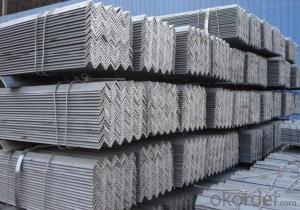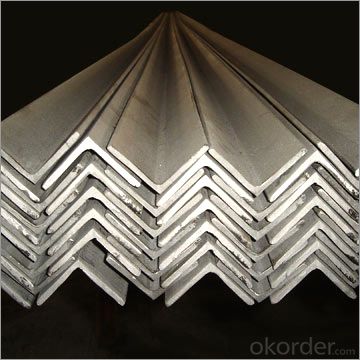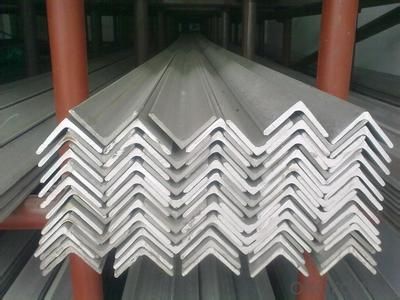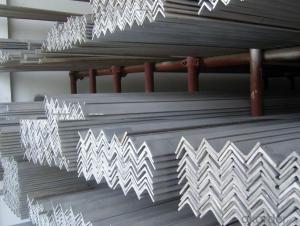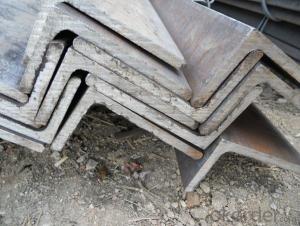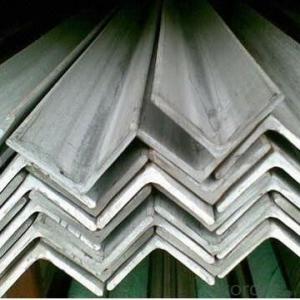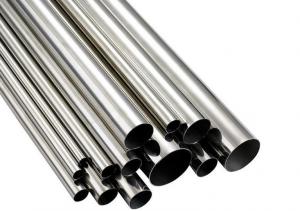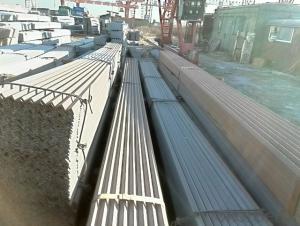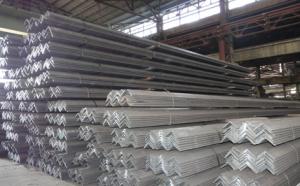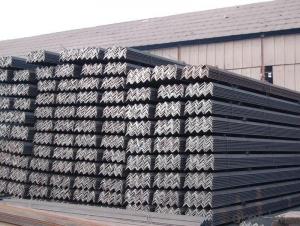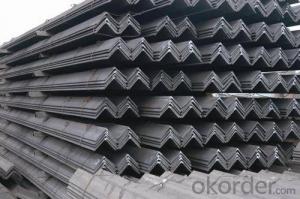Angle Steel and Galvanized Angle Steel High Quality Hot Rolled
- Loading Port:
- Tianjin
- Payment Terms:
- TT or LC
- Min Order Qty:
- 25 m.t.
- Supply Capability:
- 20000000 m.t./month
OKorder Service Pledge
OKorder Financial Service
You Might Also Like
Product Description:
OKorder is offering Angle Steel and Galvanized Angle Steel High Quality Hot Rolledat great prices with worldwide shipping. Our supplier is a world-class manufacturer of steel, with our products utilized the world over. OKorder annually supplies products to European, North American and Asian markets. We provide quotations within 24 hours of receiving an inquiry and guarantee competitive prices.
Product Applications:
According to the needs of different structures, Angle can compose to different force support component, and also can be the connections between components. It is widely used in various building structures and engineering structures such as roof beams, bridges, transmission towers, hoisting machinery and transport machinery, ships, industrial furnaces, reaction tower, container frame and warehouse etc
Product Advantages:
OKorder's Steel I-Beams are durable, strong, and resist corrosion.
Main Product Features:
· Premium quality
· Prompt delivery & seaworthy packing (30 days after receiving deposit)
· Corrosion resistance
· Can be recycled and reused
· Mill test certification
· Professional Service
· Competitive pricing
Product Specifications:
Manufacture: Hot rolled
Grade: Q195 – 235
Certificates: ISO, SGS, BV, CIQ
Length: 6m – 12m, as per customer request
Packaging: Export packing, nude packing, bundled
Sizes: 25mm-250mm | ||||||||||||
a*t | ||||||||||||
25*2.5-4.0 | 70*6.0-9.0 | 130*9.0-15 | ||||||||||
30*2.5-6.6 | 75*6.0-9.0 | 140*10-14 | ||||||||||
36*3.0-5.0 | 80*5.0-10 | 150*10-20 | ||||||||||
38*2.3-6.0 | 90*7.0-10 | 160*10-16 | ||||||||||
40*3.0-5.0 | 100*6.0-12 | 175*12-15 | ||||||||||
45*4.0-6.0 | 110*8.0-10 | 180*12-18 | ||||||||||
50*4.0-6.0 | 120*6.0-15 | 200*14-25 | ||||||||||
60*4.0-8.0 | 125*8.0-14 | 250*25 | ||||||||||
FAQ:
Q1: How do we guarantee the quality of our products?
A1: We have established an advanced quality management system which conducts strict quality tests at every step, from raw materials to the final product. At the same time, we provide extensive follow-up service assurances as required.
Q2: How do you package the angle steel when shipping?
A2: All goods are packed in bundles with steel strips and shipped by container or break bulk.
Q3: How soon can we receive the product after purchase?
A3: Within three days of placing an order, we will begin production. The specific shipping date is dependent upon international and government factors, but is typically 7 to 10 workdays.
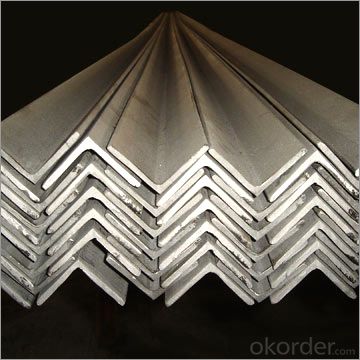

- Q: What is the maximum deflection allowed for a steel angle beam?
- Various factors, such as specific design requirements, applied load, and beam length, determine the maximum deflection permitted for a steel angle beam. Industry standards and codes play a crucial role in establishing this limit to guarantee the beam's structural integrity and safety. These standards consider material properties, section dimensions, and the beam's intended purpose. Engineers usually consult references like the AISC Manual of Steel Construction or the Eurocode for Structural Design to ascertain the maximum allowable deflection. These codes offer guidelines and equations based on the beam's characteristics and applied load to calculate this limit. It is essential to understand that the maximum deflection permitted for a steel angle beam is not a fixed value. Instead, it acts as a boundary to ensure that the beam remains structurally sound while fulfilling its intended purpose. Therefore, it is vital to consult the appropriate design codes and collaborate with a qualified structural engineer to determine the specific maximum deflection allowed for a particular steel angle beam in a given application.
- Q: How do steel angles contribute to the seismic resilience of a structure?
- Steel angles play a vital role in bolstering a structure's ability to withstand seismic events. These angled steel components are commonly utilized in construction to reinforce strength and stability, particularly in areas prone to earthquakes. One manner in which steel angles contribute to the seismic resilience of a structure is by resisting lateral forces caused by seismic activity. During an earthquake, buildings face horizontal forces that can result in significant damage. Strategically placed steel angles within the structure help distribute and dissipate these forces, thereby reducing their impact on the overall building. By acting as braces or stiffeners, steel angles enhance structural integrity and prevent excessive deformation or collapse. Furthermore, steel angles are frequently employed in conjunction with other seismic design strategies like moment frames or shear walls. These elements work in tandem to create a robust and flexible structural system capable of withstanding the dynamic forces generated during an earthquake. Steel angles are typically integrated into these systems to provide additional reinforcement, thereby increasing overall strength and rigidity. In addition to their role in resisting lateral forces, steel angles also enhance a structure's seismic resilience by improving its load-carrying capacity. By more efficiently distributing loads, steel angles help reduce stress on individual components, preventing localized failures and ensuring overall stability. Moreover, steel angles possess excellent material properties, such as high tensile strength and toughness, making them highly durable. This durability enables them to withstand the dynamic loading and cyclic motions associated with earthquakes. Additionally, steel angles are resistant to corrosion, a crucial aspect for maintaining long-term structural integrity and overall performance during seismic events. In conclusion, steel angles are essential in enhancing a structure's ability to withstand seismic events. By resisting lateral forces, improving load-carrying capacity, and providing durability, they contribute to the stability and integrity of the building. Incorporating steel angles into the design and construction process is crucial for creating structures capable of withstanding seismic activities and ensuring the safety of occupants.
- Q: Can steel angles be used as framing members for suspended ceilings?
- Yes, steel angles can be used as framing members for suspended ceilings. Steel angles are commonly used in construction for their strength and durability. When used as framing members for suspended ceilings, they provide support and stability to the ceiling system. Steel angles can be easily attached to the walls or other structural components, and they can be cut to the desired length to fit the specific ceiling dimensions. Additionally, steel angles can be painted or coated to match the aesthetic requirements of the suspended ceiling. Overall, steel angles are a reliable and suitable choice for framing members in suspended ceilings.
- Q: What are the different types of steel angles used in automotive manufacturing?
- Automotive manufacturing relies on a variety of steel angles that play a crucial role in designing and constructing automotive structures and parts. Some of the commonly utilized steel angles in this industry include: 1. Equal Angle: This type of steel angle consists of sides of equal length, forming a 90-degree angle. In automotive manufacturing, equal angles find applications in chassis frames, suspension components, and brackets. 2. Unequal Angle: As the name suggests, unequal angles have sides of unequal lengths, creating a 90-degree angle. Automotive manufacturers employ unequal angles to fabricate components with specific dimensions and angles, such as door frames, body reinforcements, and support structures. 3. L Angle: Also known as angle irons, L angles possess two sides of equal length that form a 90-degree angle. They are extensively used in automotive manufacturing for various purposes, including reinforcing panels, mounting brackets, and structural supports. 4. T Angle: Resembling the shape of the letter "T," T angles consist of one long side and one short side forming a 90-degree angle. In automotive manufacturing, T angles play a significant role in joining different components like body panels, fenders, and roof structures. 5. C Angle: Referred to as channel angles, C angles have a C-shaped cross-section. These angles offer structural strength and rigidity, making them suitable for applications such as frame rails, roll cages, and support beams in automotive manufacturing. 6. Z Angle: Z angles feature a Z-shaped cross-section, resembling the letter "Z." They are commonly employed in automotive manufacturing to join and reinforce components like door frames, roof structures, and body reinforcements. These examples merely scratch the surface of the numerous types of steel angles employed in automotive manufacturing. Each type serves a specific purpose and possesses unique properties, such as strength, stability, and flexibility, to meet the diverse requirements of automotive applications.
- Q: What is the fire resistance rating of steel angles?
- The fire resistance rating of steel angles depends on various factors such as the size and thickness of the angle, the type of steel used, and the specific fire protection measures implemented. Steel is inherently fire-resistant due to its high melting point and low thermal conductivity. However, the fire resistance rating can be enhanced by applying fireproofing materials, such as intumescent coatings or fire-resistant boards, to the steel angles. These fire protection measures can significantly increase the fire resistance rating of steel angles by providing insulation and slowing down the transfer of heat to the steel. The specific fire resistance rating can vary based on the thickness and type of fireproofing materials used. For example, a steel angle with a certain fireproofing coating may have a fire resistance rating of 60 minutes, meaning it can withstand exposure to fire for up to 60 minutes before losing its structural integrity. It is important to consult local building codes, regulations, and fire safety standards to determine the specific fire resistance requirements for steel angles in a particular application. These standards can provide guidance on the necessary fire protection measures and the minimum fire resistance ratings that need to be met in different construction scenarios.
- Q: Can steel angles be painted or coated after installation?
- Yes, steel angles can be painted or coated after installation. Painting or coating steel angles after installation can provide additional protection against corrosion and enhance their aesthetic appeal. Prior to painting or coating, it is important to clean and prepare the surface by removing any dirt, rust, or contaminants. This can be done through techniques such as sandblasting, wire brushing, or using chemical cleaners. Once the surface is clean and dry, a suitable primer can be applied to promote adhesion and prevent corrosion. After the primer has dried, a final coat of paint or coating can be applied using a brush, roller, or spray. It is essential to choose a paint or coating that is specifically designed for steel and offers the desired level of protection and durability.
- Q: How do you calculate the effective length of a steel angle?
- When calculating the effective length of a steel angle, there are two main factors to consider: the actual length of the angle and the stability of its supported members. To begin, you must determine the actual length of the steel angle. This can be done by physically measuring it or referring to the manufacturer's specifications. It is crucial to have the precise length value for the calculation. Next, evaluate the stability of the angle's supported members. The effective length of the angle is influenced by the specific conditions in which it is being used and supported. There are three primary support conditions to take into account: pinned-pinned, fixed-fixed, and fixed-pinned. In the case of a pinned-pinned support condition, the effective length is equal to the actual length of the angle. This condition assumes that both ends of the angle can freely rotate, allowing the full length to effectively resist applied loads. For a fixed-fixed support condition, the effective length is typically considered as 0.7 times the actual length. This condition assumes that both ends of the angle are rigidly connected, resulting in a reduced effective length due to the increased stiffness of the entire system. In a fixed-pinned support condition, the effective length is usually 0.85 times the actual length. In this scenario, one end of the angle is fixed while the other end can rotate freely, leading to a decreased effective length compared to the actual length. Accurately determining the support conditions of the steel angle is essential for correctly calculating its effective length. In addition, a comprehensive analysis of the angle's behavior should consider other factors such as its material properties, cross-section, and loading conditions.
- Q: Can steel angles be used for support brackets?
- Certainly, support brackets can indeed utilize steel angles. Given their strength and versatility, steel angles find widespread utility in construction and engineering contexts. Boasting a triangular configuration with symmetrical sides, these angles can be effortlessly affixed to walls, beams, or alternative structures, thereby offering essential support. Consequently, steel angles frequently serve as dependable brackets for sustaining substantial loads, providing stability, and bestowing durability upon the supported structure.
- Q: Can steel angles be used for agricultural buildings or barns?
- Indeed, agricultural buildings or barns can employ steel angles. The prevailing usage of steel angles in construction is attributed to their robustness and endurance. Specifically, they prove invaluable in agricultural buildings or barns, where the structure must endure substantial burdens and adverse weather conditions. Steel angles can be employed in the framing, bracing, and reinforcement of diverse building constituents, including walls, roofs, and doors. Furthermore, steel angles can be readily fabricated and tailored to fulfill precise design specifications, rendering them a multifaceted option for agricultural buildings or barns.
- Q: Can steel angles be used in architectural applications?
- Yes, steel angles can be used in architectural applications. Steel angles are versatile structural components that can provide stability, support, and aesthetic appeal to various architectural designs. They can be used for framing, bracing, reinforcing, and creating unique shapes and forms in buildings, bridges, and other architectural structures.
Send your message to us
Angle Steel and Galvanized Angle Steel High Quality Hot Rolled
- Loading Port:
- Tianjin
- Payment Terms:
- TT or LC
- Min Order Qty:
- 25 m.t.
- Supply Capability:
- 20000000 m.t./month
OKorder Service Pledge
OKorder Financial Service
Similar products
Hot products
Hot Searches
Related keywords
